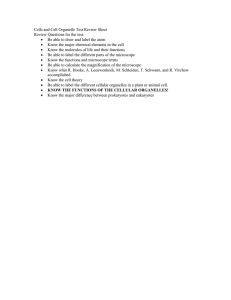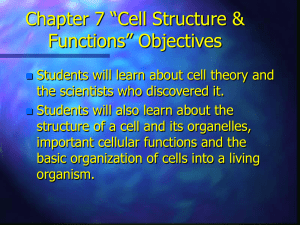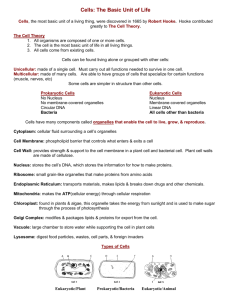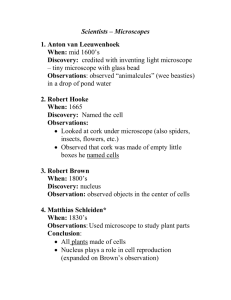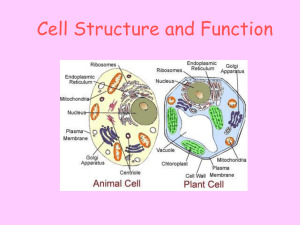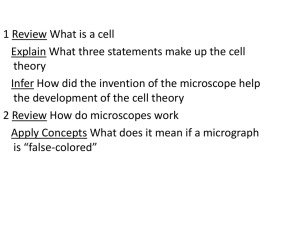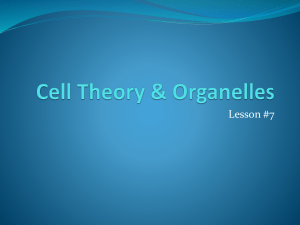Plant and Animal Cell Lab Report: Cell Structure Comparison
advertisement
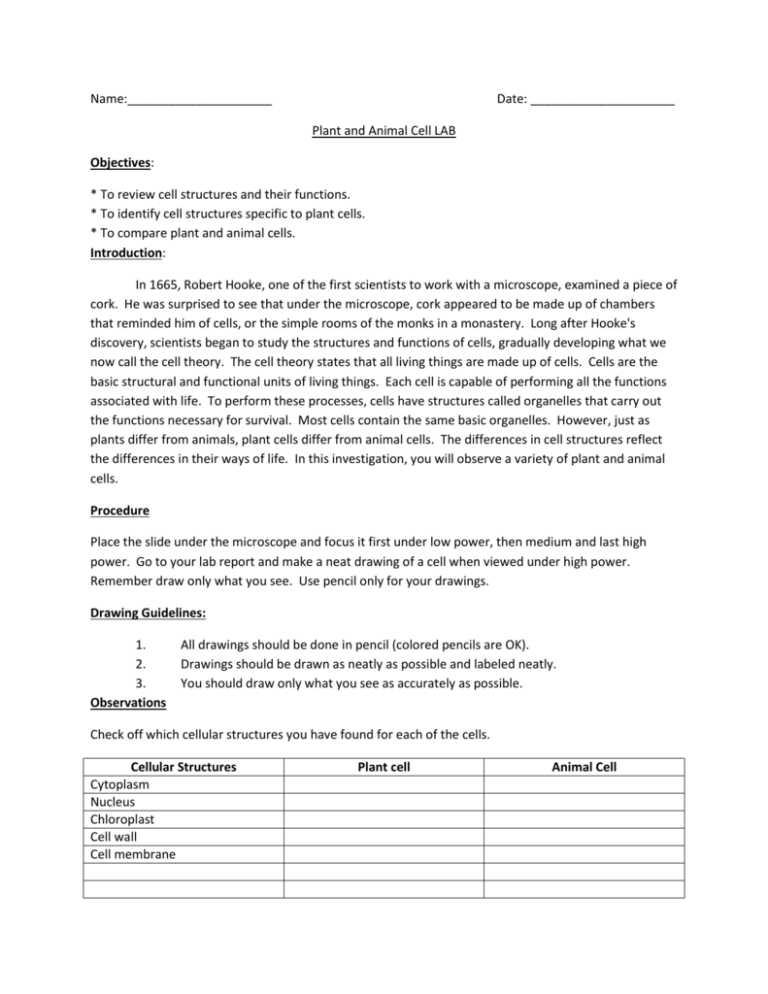
Name:_____________________ Date: _____________________ Plant and Animal Cell LAB Objectives: * To review cell structures and their functions. * To identify cell structures specific to plant cells. * To compare plant and animal cells. Introduction: In 1665, Robert Hooke, one of the first scientists to work with a microscope, examined a piece of cork. He was surprised to see that under the microscope, cork appeared to be made up of chambers that reminded him of cells, or the simple rooms of the monks in a monastery. Long after Hooke's discovery, scientists began to study the structures and functions of cells, gradually developing what we now call the cell theory. The cell theory states that all living things are made up of cells. Cells are the basic structural and functional units of living things. Each cell is capable of performing all the functions associated with life. To perform these processes, cells have structures called organelles that carry out the functions necessary for survival. Most cells contain the same basic organelles. However, just as plants differ from animals, plant cells differ from animal cells. The differences in cell structures reflect the differences in their ways of life. In this investigation, you will observe a variety of plant and animal cells. Procedure Place the slide under the microscope and focus it first under low power, then medium and last high power. Go to your lab report and make a neat drawing of a cell when viewed under high power. Remember draw only what you see. Use pencil only for your drawings. Drawing Guidelines: 1. 2. 3. Observations All drawings should be done in pencil (colored pencils are OK). Drawings should be drawn as neatly as possible and labeled neatly. You should draw only what you see as accurately as possible. Check off which cellular structures you have found for each of the cells. Cellular Structures Cytoplasm Nucleus Chloroplast Cell wall Cell membrane Plant cell Animal Cell Draw Pictures of each cell you examined. - Label all the organelles that are visible in the microscopic slide for each type of cell. Plant cell Animal cell DATA ANALYSIS 1. Describe the shape of the plant cell 2. Describe the shape of the animal cell. 3. Compare: What parts did you see in both cells? 4. What parts are found in plant cells that are absent in animal cells? CONCLUSIONS 1. What are the functions of the cell parts found only in plant cells? 2. Is the nucleus always found in the center of the cell? 3. Which part of an animal cell gives shape to the cell? 4. Which parts of a plant cell give shape to the cell? 5. Apply: Why don’t animal cells have chloroplasts? (HINT: How do animals get energy?) 6. What is the relationship between plant cell structure and the ability of plants to stand upright without bones?
